Think winter in North America means you can’t find anything fresh and local? Think again. Your locavore-loving ways don’t need to end when the temperatures steeply pitch. You’d be surprised how dedicated and enterprising your local farmers are, trying to keep things growing throughout the coldest temps. I’m a dedicated farmers’ market shopper and in the past few years, farmers in my region (eastern Pennsylvania) are increasing in both number and in ingenuity; last year I saw kale grow (and survive), albeit slowly, in the middle of the worst winter of recent memory.
Why would you want to do this? Well, food that’s grown locally often tastes better and it’s odds are, it’s better for you; local farms tend to be more inclined to observe organic, biodynamic and/or natural methods that eschew chemicals. Buying produce this way is sometimes even cheaper—it’s traveled fewer miles and is often in better shape because it hasn’t traveled (most likely) from California or Florida to your local supermarket. Here are ten foods you can likely find in the winter. (The strawberries, persimmons, pomegranates and citrus you can find in warmer places need not apply—most of us aren’t blessed with such sweetness.)
Potatoes
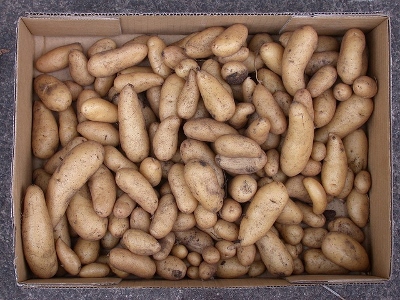
Flickr/Glen
Ever since a local farmer told me that commercial farms employ the equivalent of rat poison to keep away critters, I can’t buy conventional ones anymore. It just creeps me out. This winter staple is available in abundance across much of the United States. I’ve seen the likes of blue, red and purple potatoes in various shapes, sizes and varieties, and I’ve eaten organic Russian banana and French fingerlings, which sound both exotic and confusing, right?
Greens
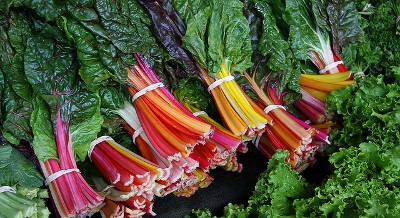
Flickr/Alex
Remember the kale I mentioned? It’s not uncommon to run across the gamut of them—lacinato, red and green curly kale, and specialty hybrids. (I know, I know: kale is a brassica, but for cooking purposes, I think of them as greens in terms of their uses.) You may also encounter red leaf lettuce, Swiss chard, spinach, mustard greens, and even a spring mix—the latter of which seems like a cruel misnomer when I’m wearing a winter coat while purchasing it. I have even purchased arugula in January. Scout’s honor.
If that’s not enough, winter often spawns microgreens such as sunflower, basil and cilantro, along with wintercress and watercress. A farmer near me grows something called claytonia, which tends to overspread like groundcover. Think of it as a milder, tinier baby spinach. You may see it as miner’s lettuce; miners used to eat it to keep away scurvy, thanks to its Vitamin C. Add a small handful to smoothies or eat it for lunch tossed with olive oil and topped with a fried egg.
Brassicas
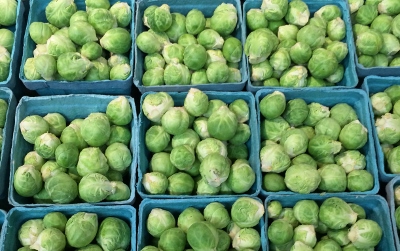
Brussels sprouts, bok choy, tatsoi, cabbage, rutabaga and broccoli—I’ve seen it all in winter markets. These babies often pop up in late spring and early fall in the traditional spring-to fall market season, and sometimes even make appearances in mid-summer. There are plenty of uses for them—roast them, steam them, toss them around in stir fries, soups and then some.
Mushrooms
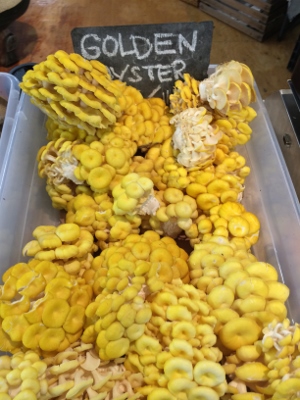
…Are in abundance in winter. Mushrooms don’t like hot climates and prefer cool and damp temps. It’s their time of year—look for cool ones such as cremini, blue-grey oyster, golden oyster, the illustrious lion’s mane.
Alliums

Flickr/David Goehring
That is, onions and garlic of all types. You’ll likely encounter yellow and red onions, great for all-purpose cooking. One of my local farmers grows something called bottle onions, which in shape and flavor recalls shallots; I have seen them referred to as banana shallots. Garlic is frost tolerant and although it’s typically harvested in mid-summer, it cures for weeks and then, in proper conditions, can store for several months. Most supermarket garlic lacks flavor in comparison to local; furthermore, a lot of is grown in China and sprayed with chemicals.
Root Veggies
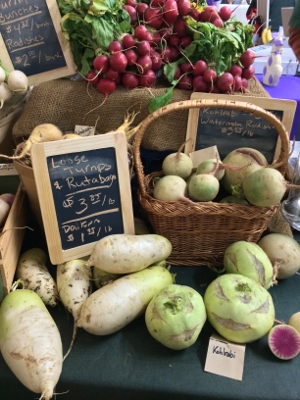
Winter also means you can find carrots, beets, parsnips, turnips and radishes such as Daikon and watermelon. Basically, think of almost any tuber that derives its strength from burrowing into the soil and sends up a tufty shock of green leaves—some of which are edible and work well as soup garnish or smoothie fodder—and you can find it in winter. (Although you can’t eat the leaves from potatoes, which is why you pretty much never see them that way.)
Apples

Flickr/Pål Alvsaker
Harvested throughout fall and hanging out in cold storage over the winter, depending on myriad factors (your local orchard’s growing habits, Mother nature and so forth), apples can tough it. Pears can, too, for a while, although typically not as long as apples. One year, we had apples all the way through the end of March.
Preserves, Pickles and Canned Foods
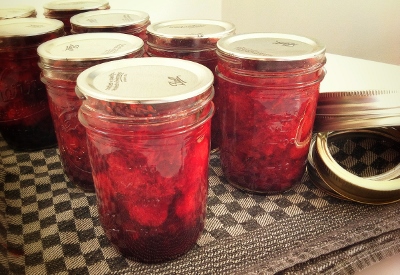
To borrow a phrase from the blog of the same name, “Food in Jars”:www.foodinjars.com—, think anything fermented, pickled, canned or preserved. At my farmers’ market, I can get kimchi, pickles, applesauce, jams, jellies, tomato sauce and ketchup—all preserved from the previous season’s harvest. Ain’t nature grand?
Cheese and Meats of All Kinds

Flickr/USB
…Are available throughout the winter. We’ve got bacon, beef, chicken, sausage, pork, and many permutations thereof. Depending on the nature of your farmer and, of course, his or her chickens, you may even find eggs. If a farmer has them, chances are the selection will be slim; egg production typically drops with the temperatures. Another reason to arrive early, with a list and a plan.
Obviously, local results may vary.
Carrie Havranek is a recovering music critic and part-time baker who writes about food, farmers’ markets, chefs and restaurants—and sometimes travel—from her home in Easton, Pennsylvania. You may have seen her work elsewhere in Edible Philly, the Kitchn, or Frommer’s.